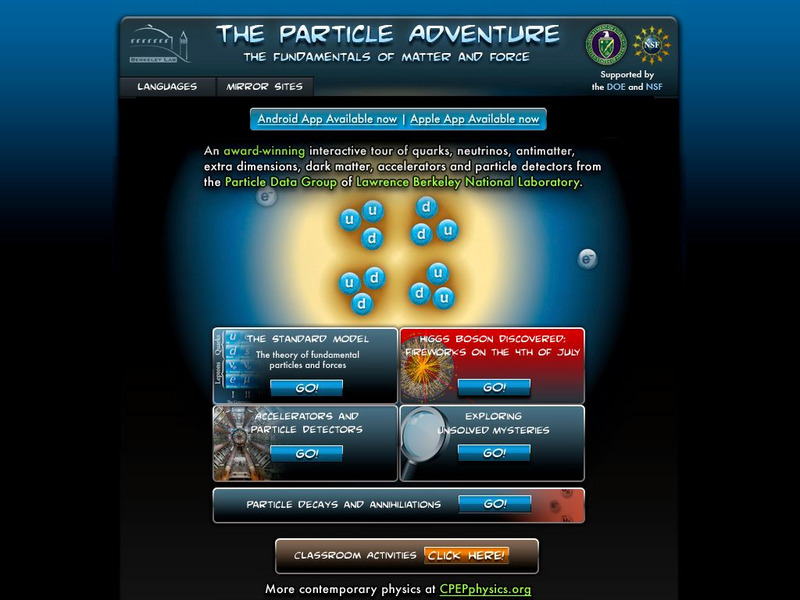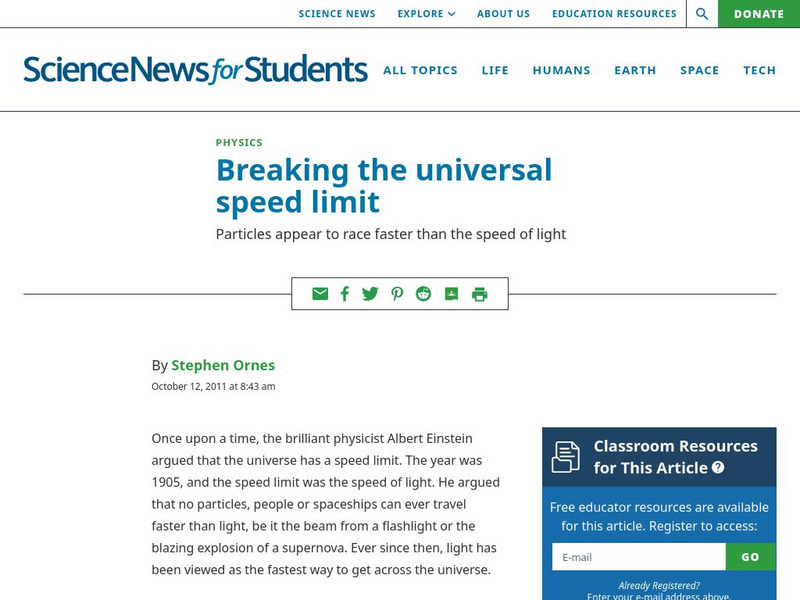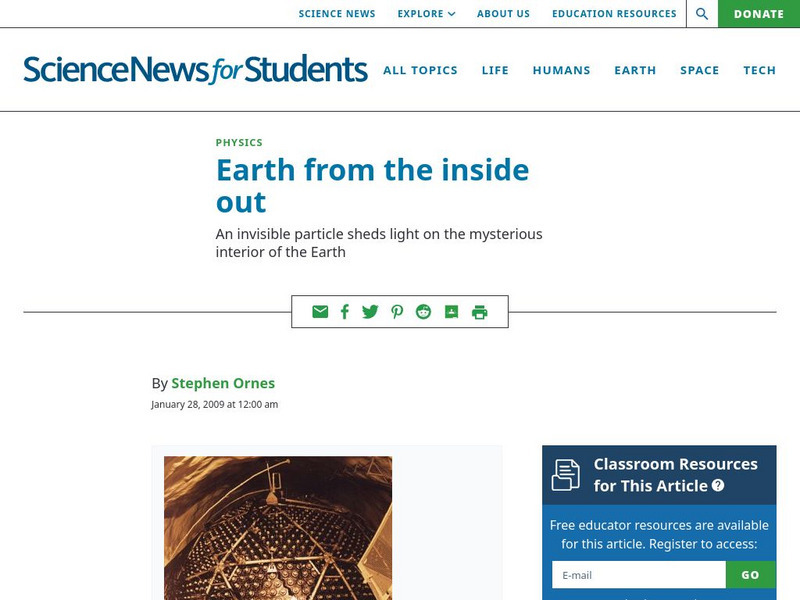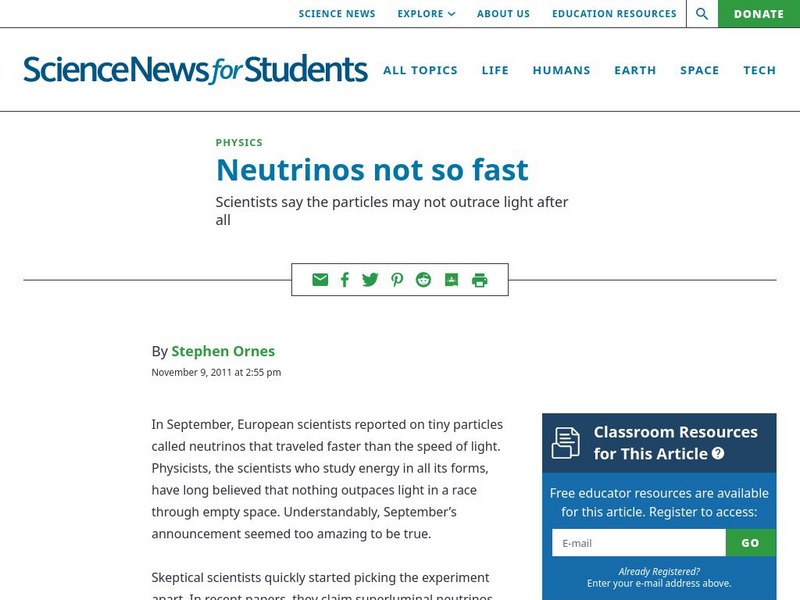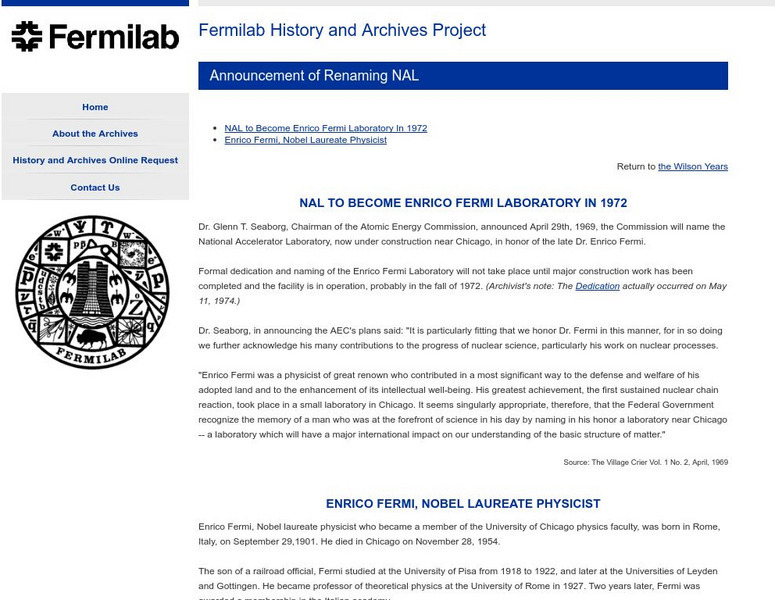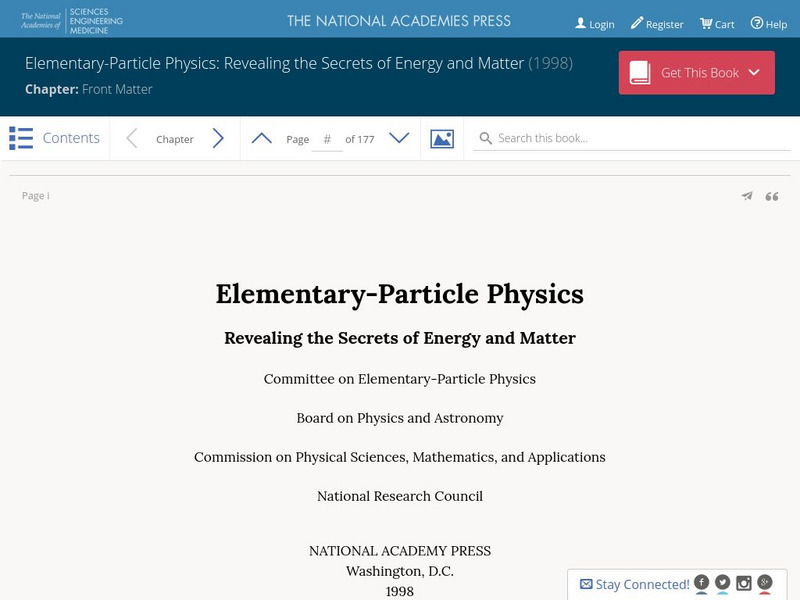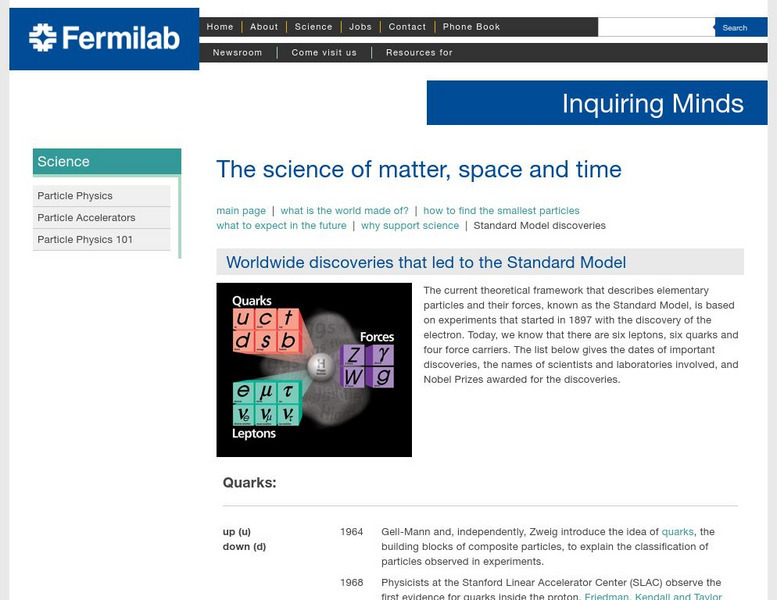University of St. Andrews (UK)
University of St. Andrews: Search for Physics Beyond the Standard Model
This webpage is a picture site showing how different leptons interact.
Other
Fermilab: Hyperons & Neutrinos
The third paragraph pinpoints the importance of hyperons in particle research. Hyperons and neutrinos share characteristics of the weak force. Complex stuff, but the real deal. Parts of this report may be very useful. Many photos, slow...
Nobel Media AB
The Nobel Prize: The Nobel Prize in Physics 1938
At this site from The Nobel Foundation, read about the life and scientific discoveries of physicist Enrico Fermi (1901-1954), whose work with radiation and "discovery of nuclear reactions brought about by slow neutrons" earned him the...
Lawrence Berkeley National Laboratory
Berkeley Lab: The Particle Adventure
Visit this site for an interactive tour of the atom and all aspects of particle physics. View the animations available with almost every description on this site. A great place for the fundamentals of particles and forces including a...
BBC
Bbc: Dark Matter
A clear explanation of how dark matter was discovered and why it is important to astronomers.
Society for Science and the Public
Science News for Students: Breaking the Universal Speed Limit
Describes research into whether neutrinos travel faster than the speed of light.
Society for Science and the Public
Science News for Students: Earth From the Inside Out
Describes scientists attempts to use geoneutrinos to see 'inside' the Earth.
Society for Science and the Public
Science News for Students: Neutrinos Not So Fast
Discusses the validity of research showing that neutrinos travel faster than the speed of light.
Symmetry Magazine
Symmetry Magazine: Explain It in 60 Seconds: Neutrino Masses
Neutrinos, described here, are particles scientists still have a lot to learn about. They are trying to measure their masses. "Explain It In 60 Seconds" is an article series that aims to summarize in a few paragraphs the meaning of...
University of Cambridge
University of Cambridge: Physics: The Neutron
This site provides a great series on the neutron discovered by James Chadwick. Includes a seven-page series that covers what is inside the nucleus, the elusive neutron, beryllium radiation, Chadwick's discovery, neutrons from beryllium,...
National High Magnetic Field Laboratory
Magnet Academy: Wolfgang Pauli
Austrian-born scientist Wolfgang Ernst Pauli made numerous important contributions to twentieth-century theoretical physics, including explaining the Zeeman effect, first postulating the existence of the neutrino, and developing what has...
Other
National Research Council: Elementary Particle Physics
The Committee on Elementary-Particle Physics, part of the U.S. National Research Council, presents this massive report on particle physics. It's a definitive document. Surprisingly readable, totally detailed. Start with the Table of...
Read Works
Read Works: Ice Picks
[Free Registration/Login Required] An informational text about a telescope called IceCube that is buried under the ice in Antarctica. A question sheet is available to help students build skills in reading comprehension.
Wikimedia
Wikipedia: Beta Decay
This site, which is provided for by Wikipedia, gives a brief encyclopedia article on what beta decay is.
Other
Fermilab: Worldwide Discoveries That Led to the Standard Model
A thorough review of subatomic particles and the people that discovered them. Each particle has its own link for additional information.





